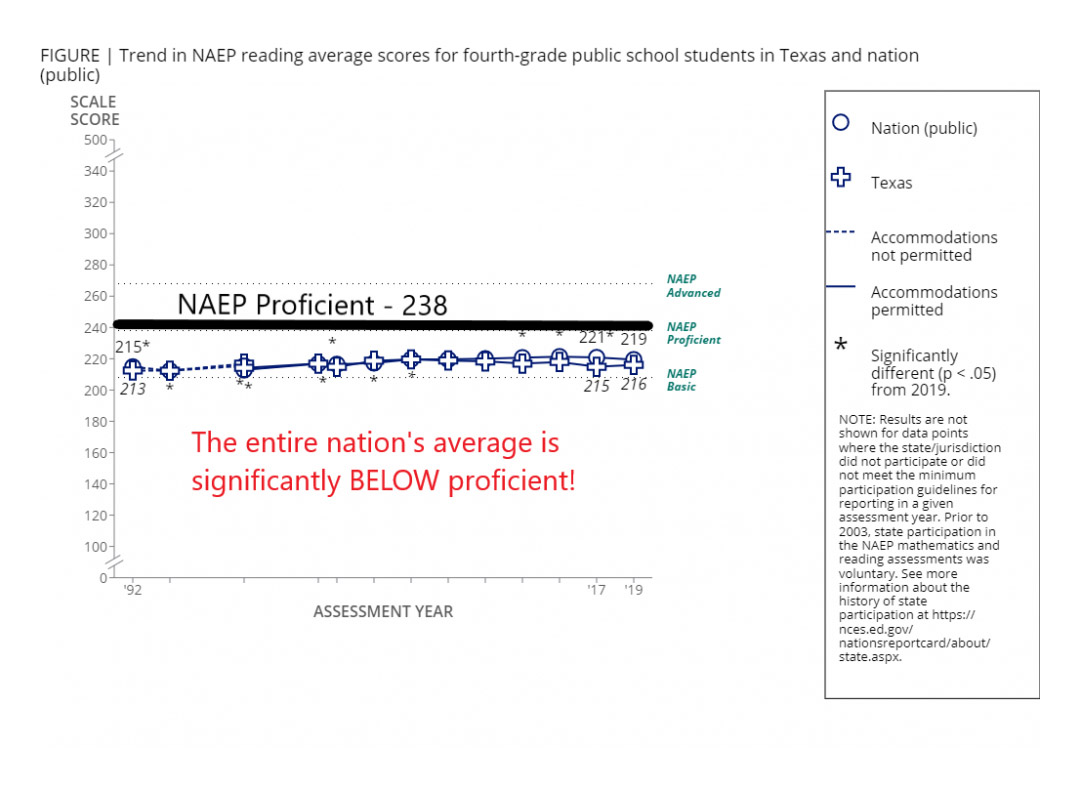Covid, Our Schools, and Teaching Reading
While hard data regarding the effects of the nationwide shutdown of schools is sparse. There is plenty of anecdotal data that shows the COVID shutdown has been devastating to many students and particularly to early elementary students learning basic reading and math. Thousands of our students aren’t learning to read, and the patchwork of instructional programs, limited resources and frequent change from hybrid to virtual schooling surely is contributing to the problem.
Even before the pandemic, our children were not reading well. Scores on the National Assessment of Educational Progress stagnated, with children lacking even basic proficiency by the end of third grade. Over one-third of our nation’s fourth-graders were scoring below basic levels on standardized tests, based on the National Association of Educational Progress 2019 results. Due to the pandemic, 2020 results are not and likely will not be available!
The results show that average scores for the fourth-graders fell from 221 to 219 between 2017 and 2019. Texas scores rose, but only by 1 point to 216. Note that the average scores for the nation and for Texas are significantly below the proficient level!
The move away from Phonics to Whole Language has been an abject failure. The whole-language approach strives to teach children to read words as whole pieces of language, so if a child sees the word dog enough times they will associate that word with a dog. The latest estimates have over 1M words in the English language, how are we going to expose children to that many words, and provide them no tools to decode a new word or phrase?
Phonics teaches letter/sound combinations, decoding, etc. Recent research has proven that teaching phonics aligns with how our brains function while reading(Yuliya Yoncheva et al, March 2015). A good video illustrates some of the results of this research:
For too long, we’ve been doing the same thing in reading instruction over and over and expecting different results! Despite decades of application in many reading programs, these methods have never been shown to be effective.
In fact, many of these methods are based on theories of reading development that have been demonstrated to be false. Instead of embracing instruction based on scientific evidence, too many of our nation’s schools, politicians, and “experts” cling to ideas from the dark ages of literacy instruction that do not stand up to research.
A recent survey suggests that about 75% of teachers use curricula that teach early reading using a cueing approach. And, 65% of college professors teach this approach to new teachers. This method does not align with the scientific evidence of how children learn how to read. The Cueing approach is a whole-language approach that does NOT align with scientific research, yet our Colleges and Universities are still teaching this method to our upcoming teachers!
My goal in developing The Reading Ranch was to solve the issues that I faced as a teacher. The outdated and ineffective methods to teach kids to read. That’s what drove me to create a curriculum that is interactive, fun, and teaches kids the way we should teach them.
The process of learning to read is difficult. It is a complex cognitive process that requires skills that are systematically and sequentially taught and learned. These skills include not just phonics, but vocabulary, fluency, and comprehension. It also demands background knowledge, gained when children read meaningful content. These skills can’t be taught in a haphazard way; they must be built on one another with a structured curriculum and proper instruction.
In our post-pandemic world, we will hopefully find ourselves making the right choices in literacy instruction for our children. We can use research from the science of reading to adopt research-based reading programs and rethink the training of our teachers.

